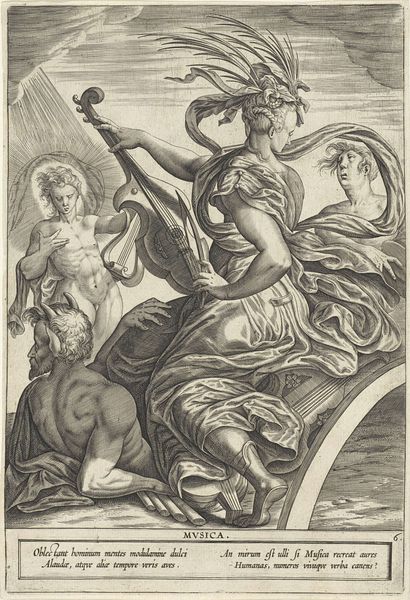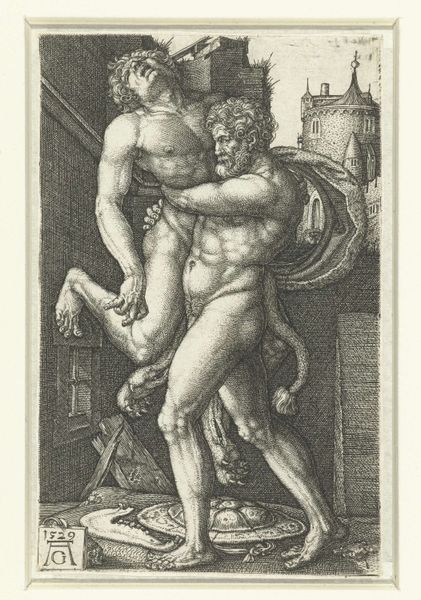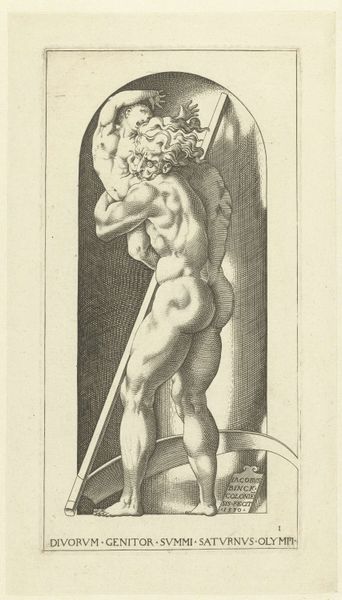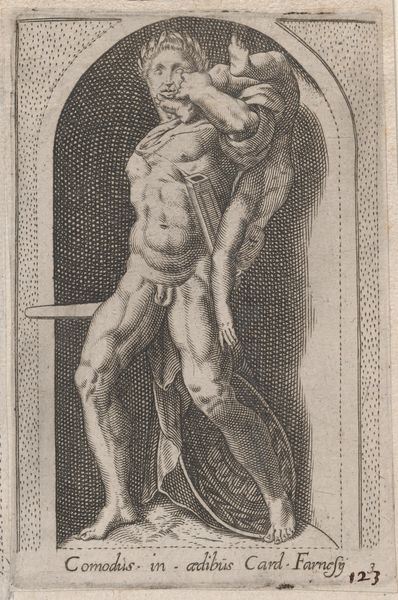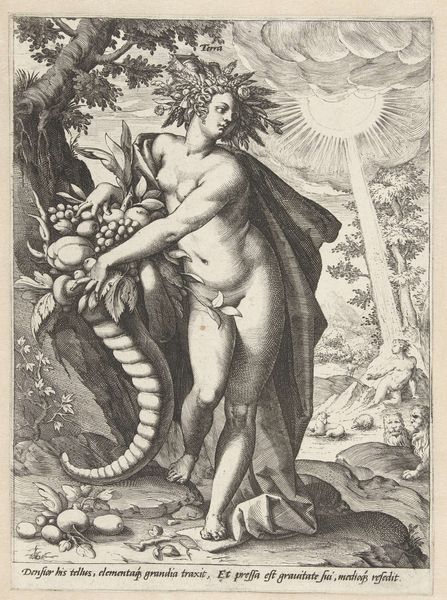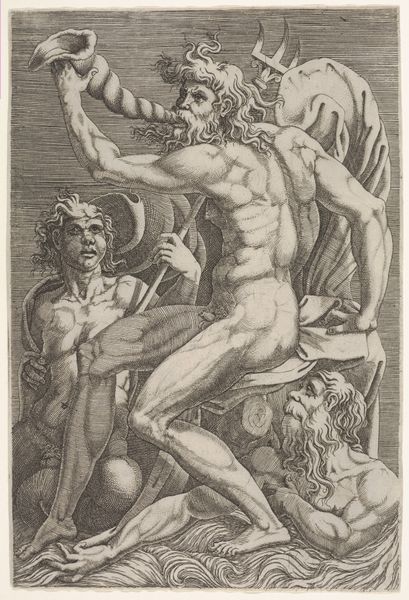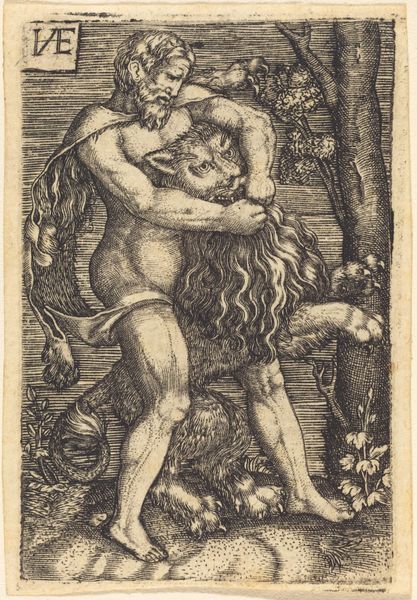
engraving
#
caricature
#
figuration
#
11_renaissance
#
genre-painting
#
italian-renaissance
#
nude
#
engraving
Dimensions: height 192 mm, width 124 mm
Copyright: Rijks Museum: Open Domain
Editor: This engraving, "Sater en nimf," by Marco Dente, was created sometime between 1498 and 1532. It depicts a nude nymph riding a satyr, and the detail achieved through the engraving process is really striking. What can you tell me about the production and context of this image? Curator: From a materialist perspective, this engraving provides insight into the printing practices of the Renaissance. We can consider the labor involved in creating the copper plate, the skill required for the detailed engraving, and the role of workshops in producing these images for circulation. Editor: So, the value isn’t just in the artistic skill, but also the labor process? Curator: Precisely. How the printmaking process democratized imagery. The engraving allowed for multiples, disrupting the uniqueness associated with painting. It becomes a commodity, distributed and consumed. Who was buying these images, and what social function did they serve? Were they educational, decorative, or perhaps even… something else? Editor: I never thought of it like that, but how the image is made influences how we interpret the imagery depicted. It shifts the focus from mythology to the everyday economy that allowed it to be. Thank you for providing that fresh perspective! Curator: Thinking about art through the lens of its creation and circulation reveals a richer understanding of its impact.
Comments
No comments
Be the first to comment and join the conversation on the ultimate creative platform.



